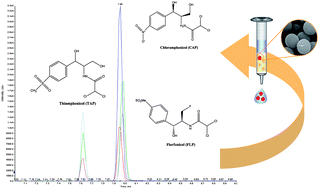Development of a HPLC-MS/MS confirmatory method for the simultaneous determination of amphenicols in baby formulas using molecularly imprinted polymers
Abstract

* Corresponding authors
a
Analytical Chemistry, Nutrition and Bromatology, Faculty of Veterinary Medicine, Lugo, Spain
E-mail:
patricia.regal@usc.es
Fax: +34 982 254592
Tel: +34 982 285900

 Please wait while we load your content...
Something went wrong. Try again?
Please wait while we load your content...
Something went wrong. Try again?
R. Barreiro, M. Díaz-Bao, P. Regal, J. M. Miranda and A. Cepeda, Anal. Methods, 2013, 5, 3970 DOI: 10.1039/C3AY40374B
To request permission to reproduce material from this article, please go to the Copyright Clearance Center request page.
If you are an author contributing to an RSC publication, you do not need to request permission provided correct acknowledgement is given.
If you are the author of this article, you do not need to request permission to reproduce figures and diagrams provided correct acknowledgement is given. If you want to reproduce the whole article in a third-party publication (excluding your thesis/dissertation for which permission is not required) please go to the Copyright Clearance Center request page.
Read more about how to correctly acknowledge RSC content.
 Fetching data from CrossRef.
Fetching data from CrossRef.
This may take some time to load.
Loading related content
